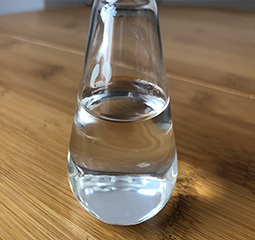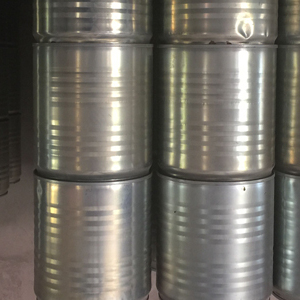Dichloromethane
Molecular formula: CH2CL2
Relative molecular weight: 84.93
Physicochemical properties: colorless, transparent and volatile liquid with ether like smell and sweet taste. Relative density: d4201 326kg / L, boiling point: 40.4 ℃, melting point: - 96.7 ℃, spontaneous combustion point: 615 ℃. Slightly soluble in water, soluble in ethanol and ether, toxic and anesthetic. Dichloromethane has hydrolysis reaction with water. Commercial dichloromethane contains stabilizer to prevent hydrolysis. Dichloromethane and high concentration oxygen will produce explosive mixture, but it is not flammable. It is one of the solvents with low toxicity, non flammable and low boiling point commonly used in industry.
Usage: for non combustible solvents: metal paint cleaning, film remover, metal degreaser, cellulose triacetate solvent; Solvents in the production of motion picture films, aerosols, antibiotics and vitamins; Foaming agent: used for foaming engineering plastics; Used in the production of flame retardant series products; Products used to replace F11 and F12; It is used to synthesize fine chemical products.
Packaging, storage and transportation: dichloromethane is sealed in galvanized iron drums, black iron drums or tank cars, and its filling volume is 80% of the container. Nitrogen protection can be provided for users with special requirements. The storage shall be placed in a dry and cool place, and the warehouse shall be equipped with ventilation facilities to avoid contact with high concentration of oxygen or oxide and water to prevent hydrolysis. The transportation shall comply with the provisions of the people's Republic of China on highway and railway transportation of hazardous chemicals.
Safety and health: explosion limit of dichloromethane in air: 8.1 ~ 17.2%, belonging to combustible chemicals. High concentration and long-term exposure are easy to cause dizziness, drowsiness, nausea, tinnitus or numbness of limbs. When moved to a place with fresh air, the symptoms will recover quickly and will not cause lasting damage. Splashing into the eyes can cause pain and irritation, and long-term contact with the skin can cause dermatitis.
Quality standard for dichloromethane GB/T4117-2008
Item | Index |
Superior products | First Grade | Qualified products |
Dichloromethane/%≥ | 99.9 | 99.5 | 99.2 |
Carbon tetrachloride/%≤ | 0.01 | 0.02 | 0.03 |
Moisture /%≤ | 0.0004 | 0.0008 |
HCl /%≤ | 10 |
Evaporation residue/%≤ | 0.0005 | 0.001 |
[application 1] it is used as solvent and organic synthesis
[application 2] it is a non combustible low boiling solvent. It is used for cellulose acetate film-forming, aerosol, antibiotic and vitamin production. It is also used as extractant and metal cleaning agent
[application 3] dichloromethane is the raw material for the production of fungicides myclobutanil and miconazole, and it is also a good solvent.
Application 4: extraction solvent. For example, it is used to extract caffeine from coffee beans. It can also be used as extraction solvent for hops, spices and oleoresin. Pigment diluent.
[application 5] in addition to organic synthesis, the product is also widely used as cellulose acetate film-forming agent, cellulose triacetate drawing agent, petroleum dewaxing agent, aerosol and solvent in the production of antibiotics, vitamins and steroids, as well as cleaning and degreasing agent for metal surface coatings. In addition, it is also used for grain fumigation and refrigeration of low-pressure refrigerator and air-conditioning device. It is used as auxiliary foaming agent in the production of polyether urethane foam and as a foaming agent for extruding polysulfone foam plastics.
















